The Encyclopedia of Spices and Herbs: An Essential Guide to the Flavors of the World. / Padma Lakshmi with Judith Sutton and Kalustyan’s Spice Shop. Copyright 2016, Lakshmi Media, Inc. Published by Ecco, an Imprint of HarperCollinsPublishers. 337 p., color illustrations, bibliography, index.
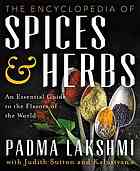
In the tones and colors of a well-stocked bazaar along the silk road, Padma Lakshmi’s third book, The Encyclopedia of Spices and Herbs, shows how ancient lore and the present uses of seasonings describe food trends and traditions the world over. Enriching the text is a curated collection of spices and herbs photographed by Evan Sung. Spices portrayed in a nouvelle antique style evokes the rich variety that has been traded for centuries.
A compact book, it’s not too heavy to fit into your backpack, bag or satchel if you’re going about spice-hunting. It features a dictionary-style index from A to Z that includes common and also-known-as names, such as Achiote for Annatto, to Zeresk for Barberry, followed by Zhoug, the last entry in the dictionary.
Since many spice names are known in languages other than English, Lakshmi’s entries feature the spice labelled as in spice shops, with an entry for the English equivalent if it exists. An example is Anise and Fennel, whose names familiar to English speakers, also called Saunf in India. Anise and fennel, cumin, caraway and dill are all related to parsley, sharing characteristics of taste and seed shape. Listings for each describe flavors and uses, with caraway, dill and fennel featured in photographs.
Spice mixtures known by names such as Fines Herbes, Herbes de Provence, curry powders, pickling spices, Za’atar and many others are the cook’s secret ingredients. Some of these are generally known from the cuisine of France, but Za’atar, a Mediterranean mixture, could be quite a popular snack if mixed with Extra Virgin Olive Oil. It then becomes a dipping sauce with an earthy/lemony flavor that’s so easy to prepare for slices of pita or other bread.
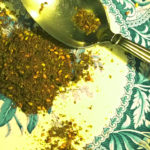
Za’atar—What it is: thyme, sumac, sesame seeds (1 tsp each), pinch of salt (optional). The image is a mixture that includes sesame seeds and nigella seeds.
How to use it: Add dry herbs to a small bowl. Whisk together and thoroughly mix the herbs; add a pinch of salt if using.
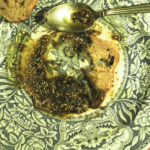
Pour the spice mixture into the center of a large flat plate. Then, flood the spice with 1-2 tablespoons of Extra Virgin Olive Oil (or more as needed). Allow the spice to become thoroughly saturated with EVOO. It’s ready to serve! Bring a basket or plate of slightly warmed pita bread or other bread slices to dip into the Za’atar.
As valuable, too, are spice pastes that combine wet and dry ingredients: they’re easy to use either in cooking or as a table sauce and can be kept fresh and ready for short periods in the fridge. Adding these ingredients plus the manner of incorporating them into recipes enhances your cooking technique like nothing else. Imagine a picnic without condiments, Thanksgiving dinner without sauces, drinks without navigation towards taste: the flavors we dream about, the ones we are passionate about are known because of spices and herbs!
Harissa is a spice paste originating in Morocco that appears occasionally in vegan (also vegetarian and omnivore) cookbooks. It’s a very HOT! spice paste consisting of dried hot chilis, garlic, cumin, coriander and sometimes mint which are blended with olive oil to furnish a consistency for stews or to create a table sauce.
Seasonings with the most coverage include peppers and chilis, as there are multiple species for these strong-flavored spices. For chilis, there are 34 separate chilis described along with their index, ranging from 1.5 (mildest) to 10 (hottest). Their portraits reveal distinctive characteristics we can only imagine the taste of, which ranges from fruity for the mildest chilis. Peppers also have a grand showing in a variety of brown, green, white and red peppercorns. And Salt has a list of its own, 13 items long where you can learn about Maldon, Celtic, pink, black, and smoked salts to name a few.
Lakshmi’s rendition of a dictionary-style list of these seasonings is just right for both the novice and the professional cook. She created the format based on her love of food and the features most desired in a list. Thus, each entry contains the botanical name of the spice or herb, its history and use factors and medicinal use if it exists.
Follow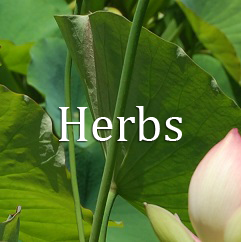
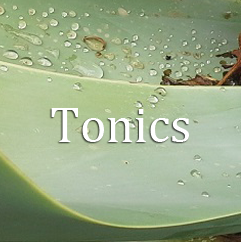
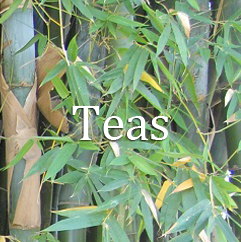

[…] See my review of the book at Spices and Herbs. […]